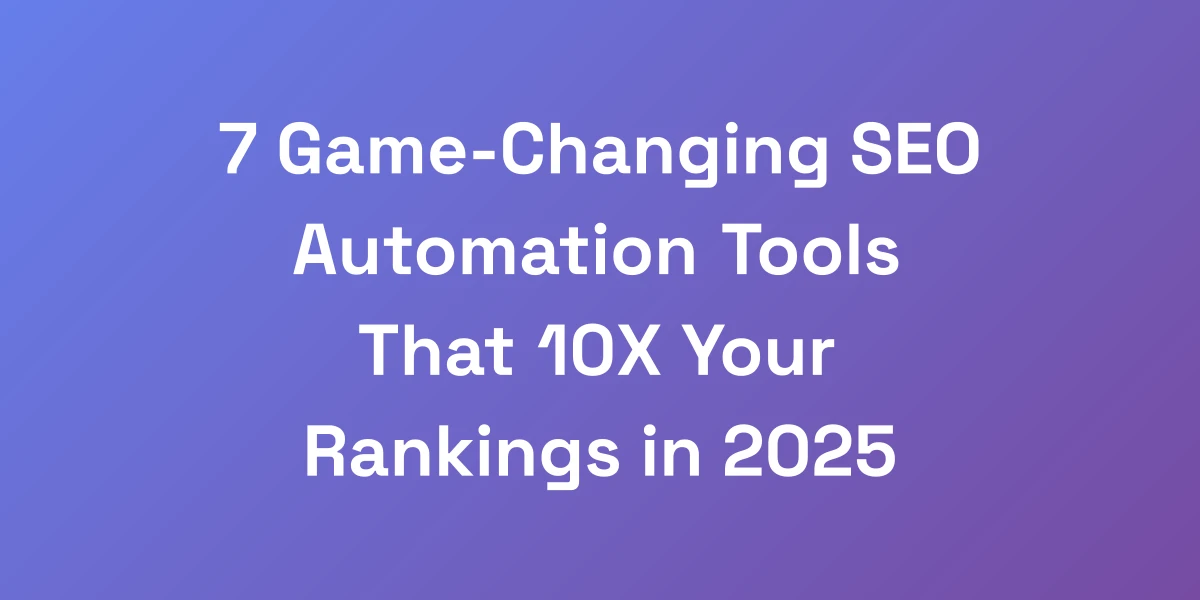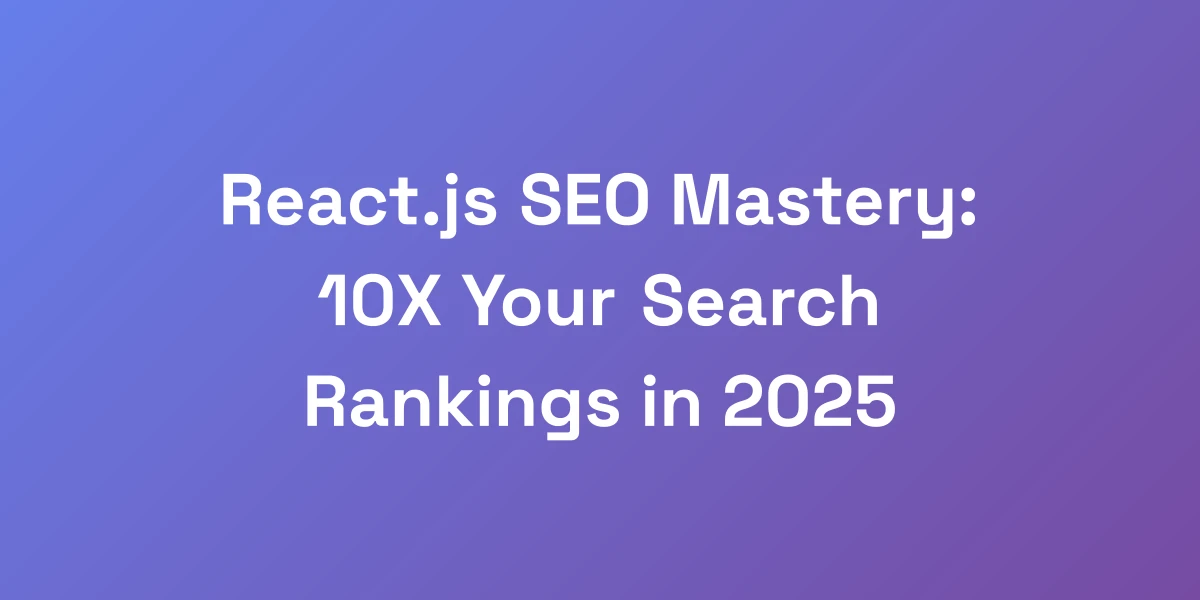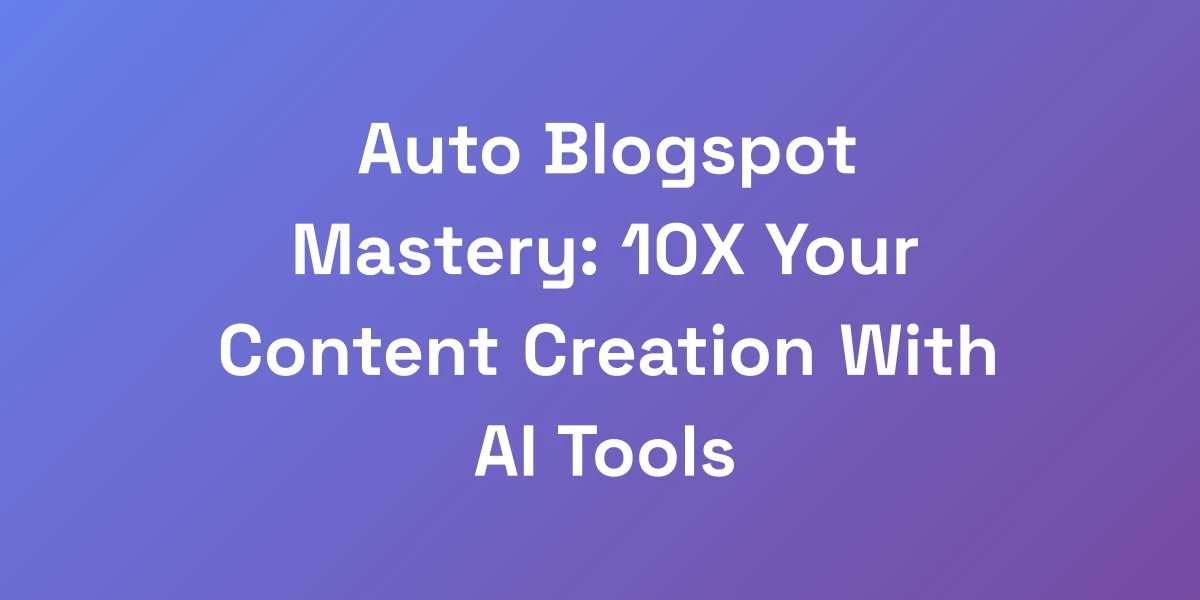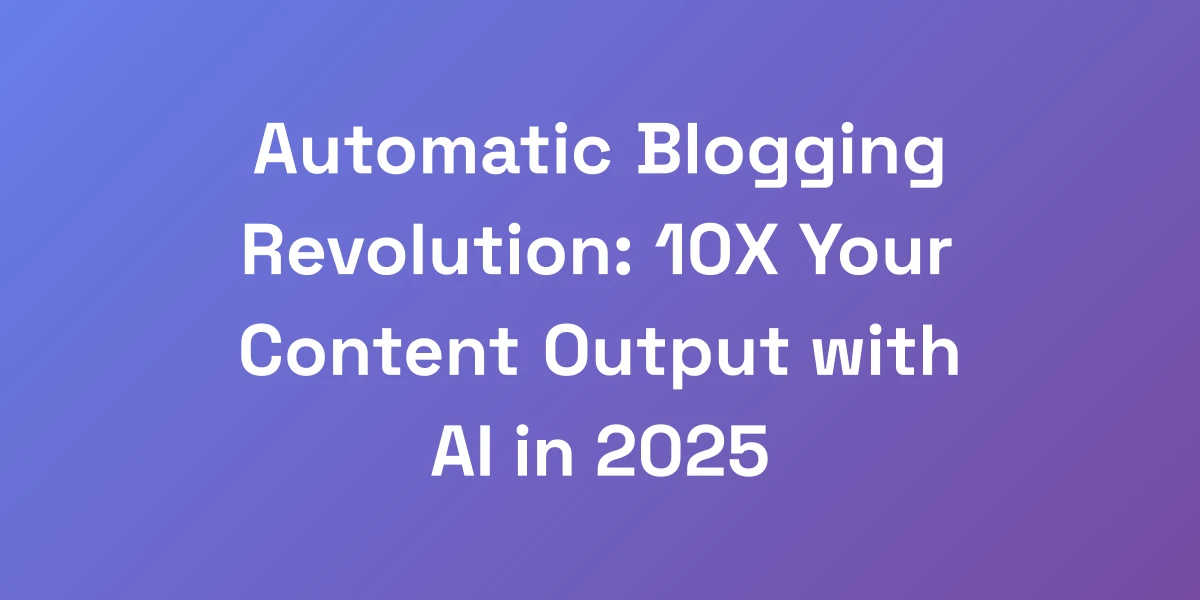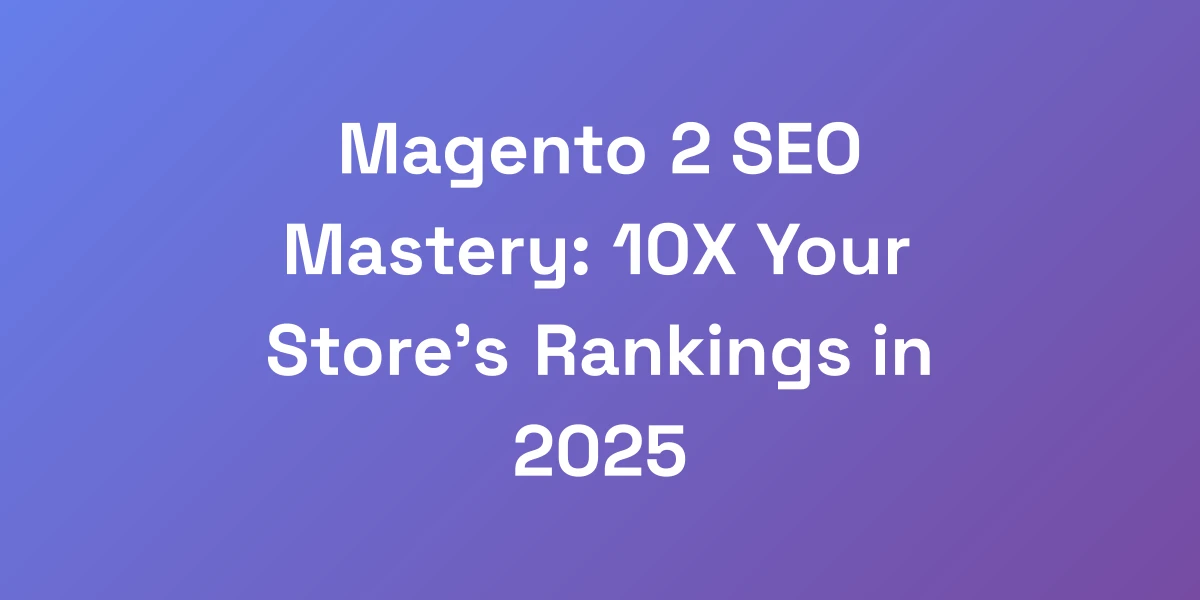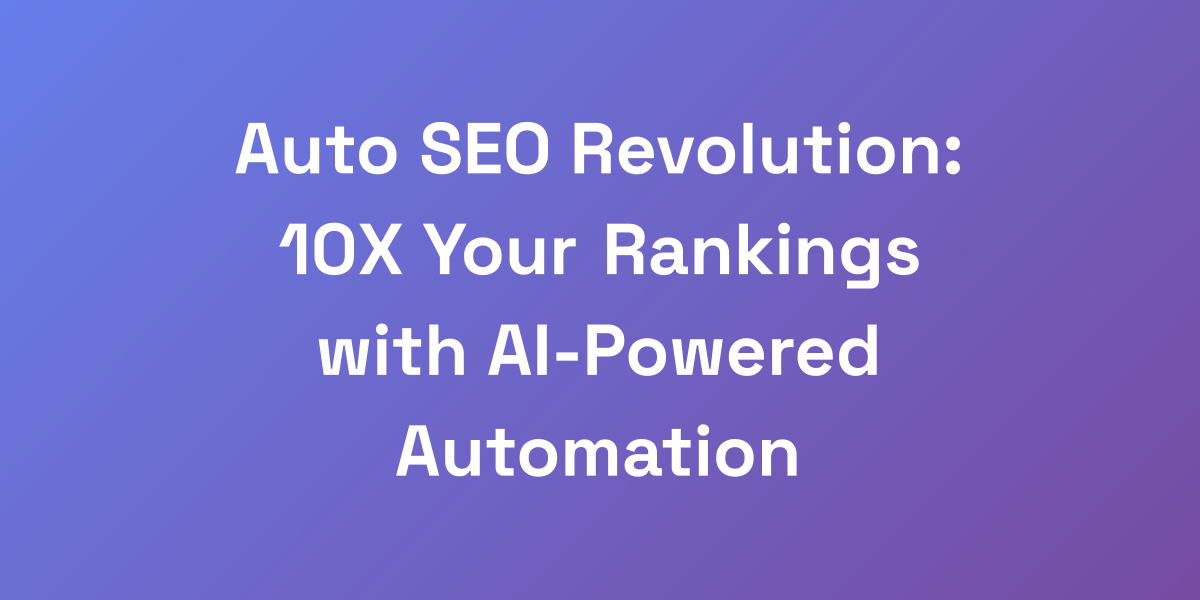
Auto SEO Revolution: 10X Your Rankings with AI-Powered Automation
Feb 1, 2025 | By [email protected]
Let’s face it: if you’re still grinding SEO manually, you’re stuck in the digital stone age. In 2024, clinging to traditional SEO methods is like trying to win a Formula 1 race in a horse-drawn carriage. The evolution of AI-powered auto SEO is not just a trend—it’s the revolution in digital marketing automation that could 10X your rankings. We’re talking about tools that act like your personal army, working tirelessly around the clock to boost your online presence.
Here’s the kicker: while your competitors harness AI to streamline their SEO processes, you’re spending hours, maybe even days, on tasks that can be done in seconds. Imagine automating tedious tasks like keyword research, content optimization, and real-time analytics. Sounds like a dream? It’s a reality now, and today, we’re diving deep into how you can ride this wave of automation to dominate the SEO game.
In this article, we’ll uncover why manual SEO is obsolete and delve into the core components of modern auto SEO systems. We’ll lay out a strategic framework for implementing these tools and guide you on how to measure and scale your success. By the end, you’ll be armed with everything you need to transform your SEO strategy and leave your competition in the dust.
The Evolution of SEO Automation: Why Manual SEO is Dead
Let me hit you with some truth: if you’re still doing SEO manually in 2024, you’re literally burning money. I’ve seen businesses waste hundreds of thousands on traditional SEO when automation tools could’ve done the job 10X faster and better. The game has changed. AI-powered auto SEO isn’t just a fancy addition to your toolkit – it’s the new battlefield where winners and losers are determined. Here’s the reality: while your competitors are scaling their SEO efforts across hundreds of pages automatically, you’re still stuck in the stone age, manually tweaking meta tags. It’s time to evolve or get left behind.
The Painful Truth About Manual SEO Processes
Let’s be honest: manual SEO processes are painstakingly slow. They’re like trying to fill a swimming pool with a teaspoon. The time it takes to conduct keyword research, analyze data, and optimize content manually is astronomical.
For instance, think about the hours spent on keyword research—identifying relevant keywords, analyzing their competitiveness, and manually testing their efficacy. It’s not just time-consuming; it’s also prone to human error.
Why go through this agony when AI tools can do it more efficiently? Automation eliminates the grunt work, allowing you to focus on strategic decision-making.
How Auto SEO is Revolutionizing Digital Marketing
Auto SEO is transforming the way businesses approach digital marketing. With AI-powered tools, businesses can now automatically generate insights that were previously accessible only through exhaustive manual effort.
These tools use machine learning to analyze vast amounts of data, identifying patterns and trends that human analysts might miss. They understand user intent better and can optimize content more precisely, ensuring that it resonates with your audience and ranks higher in search results.
The Cost-Benefit Analysis: Manual vs. Automated SEO
When it comes to cost versus benefit, automated SEO is the clear winner. Manual SEO often involves hiring teams of experts, each with a specific role: keyword analyst, content writer, SEO strategist, etc. The costs add up quickly.
- Resource Efficiency: Automation reduces the need for a large team, as tools can perform multiple roles simultaneously.
- Scalability: Automated tools can handle more data and process it faster, allowing you to scale your efforts without increasing costs significantly.
- ROI: The efficiency and scalability of automated SEO lead to improved ROI. The global SEO software market is projected to grow at a CAGR of 12.9% from 2024 to 2030, highlighting its profitability.
Real Numbers: Time Saved Through Automation
The numbers don’t lie. Automation saves a significant amount of time:
- Keyword Research: AI tools can analyze data sets in seconds, a task that could take days manually.
- Content Optimization: Automated tools can instantly suggest improvements based on the latest SEO guidelines.
- Technical Audits: AI conducts comprehensive site audits in minutes, identifying issues that would take hours to find manually.
These time savings enable businesses to allocate resources to strategic areas, enhancing overall productivity and effectiveness.
Why 2024 is the Tipping Point for SEO Automation
2024 marks a pivotal year for SEO automation. With Google’s core updates emphasizing content quality and user experience, there’s an increasing need for efficient and precise SEO strategies. Google’s algorithm updates will further shape the landscape.
AI-driven tools are now capable of understanding user behavior and search intent at an unprecedented level. They provide predictive analytics, allowing businesses to anticipate shifts in user interests and adjust strategies accordingly.
In this rapidly evolving landscape, embracing automation isn’t just advantageous—it’s essential for survival.
Core Components of Modern Auto SEO Systems
Listen up, because this is where the magic happens. Modern auto SEO isn’t just about basic keyword stuffing or automated backlink building. It’s an entire ecosystem of intelligent systems working together to dominate search rankings. I’ve personally tested dozens of these tools, and I can tell you that the best ones combine machine learning, natural language processing, and predictive analytics to create an unstoppable SEO force. The key is understanding how these components work together to create a system that’s greater than the sum of its parts. Let me break down exactly what makes these tools worth their weight in gold.
AI-Powered Keyword Research and Analysis
AI tools revolutionize keyword research by analyzing user intent and predicting trending topics. They evaluate keyword competitiveness, search volume, and relevance, providing accurate data in real-time.
These tools leverage machine learning to understand contextual meanings, ensuring that your keywords align with user intent and improve your site’s visibility.
Automated Content Optimization Engines
Content is king, but only if it’s optimized. Automated content optimization engines ensure that your content is in line with current SEO guidelines. They suggest improvements in structure, readability, and keyword placement.
- Natural Language Processing: These engines utilize NLP to refine content tone and style, enhancing engagement.
- Dynamic Updates: They keep your content updated with the latest SEO trends, ensuring sustained rankings.
Technical SEO Automation Features
Technical SEO can be daunting, but automated tools simplify the process by automating site audits, identifying errors, and providing actionable solutions. They ensure your site is technically sound and optimized for search engines.
- Real-Time Monitoring: Continuous monitoring of your site’s health to promptly address technical issues.
- Schema Markup Implementation: Automated tools help implement schema markup, enhancing search visibility.
Link Building Automation Tools
Backlinks are the backbone of SEO. Automated link-building tools help in identifying and acquiring high-quality backlinks, improving your site’s authority.
These tools analyze potential link sources, assess their quality, and suggest link-building strategies that align with your SEO goals.
Performance Tracking and Analytics Automation
To win the SEO game, you need to track performance meticulously. Automated analytics tools provide real-time insights into key metrics, enabling data-driven decisions.
- Customizable Dashboards: Tailored dashboards provide a comprehensive view of your SEO performance.
- Predictive Analytics: Tools offer insights into future trends, allowing proactive strategy adjustments.
Implementing Auto SEO: A Strategic Framework
Here’s the deal – having the tools isn’t enough. You need a strategic framework to deploy auto SEO effectively. I’ve seen companies blow six figures on automation tools without a proper implementation strategy, and guess what? They failed miserably. The secret sauce is in the systematic approach to rolling out these tools across your digital assets. It’s about creating a seamless workflow that maximizes the power of automation while maintaining control over your SEO strategy. Let me show you exactly how to do this right.
Initial Setup and Configuration Best Practices
Setting up automation tools requires attention to detail. Ensure you configure them according to your SEO goals. Start by clearly defining objectives and aligning tool settings with those goals.
Customize dashboards and reports to track performance metrics that matter to your business, allowing for effective monitoring and adjustment.
Content Workflow Automation Steps
Automating content workflows involves integrating tools that handle content creation, optimization, and distribution seamlessly.
- Content Calendars: Use automation to schedule content creation and publication, ensuring consistency.
- Collaboration Tools: Integrate tools to facilitate team collaboration, improving efficiency.
Technical Implementation Guidelines
When implementing SEO automation, ensure your tech stack is compatible with the tools. Conduct a thorough audit of your current systems and identify integration opportunities.
Plan for seamless data flow between systems, minimizing manual intervention and ensuring data accuracy.
Integration with Existing SEO Tools
Existing SEO tools can complement your automation efforts. Integrate them to enhance functionalities and leverage their strengths for a comprehensive SEO strategy.
Ensure compatibility and streamline processes to maximize the benefits of both automated and traditional tools.
Quality Control and Human Oversight
While automation enhances efficiency, human oversight is crucial. Maintain quality control by periodically reviewing outputs and making necessary adjustments.
Train your team to understand automation tools, ensuring they can intervene when needed and optimize the outputs continuously.
Measuring and Scaling Auto SEO Success
Want to know the real difference between those who succeed with auto SEO and those who fail? It’s all in the metrics and scaling strategy. I’ve helped companies go from zero to generating millions in organic traffic, and it always comes down to knowing exactly what to measure and how to scale what’s working. The beauty of automation is that once you find a winning formula, you can replicate it infinitely across your entire digital presence. But you need to know what success looks like first.
Key Performance Indicators for Auto SEO
Track KPIs that align with your business goals. Focus on metrics such as:
- Organic Traffic: Measure the number of visitors from search engines.
- Bounce Rate: Monitor the percentage of visitors leaving your site after viewing only one page.
- Conversion Rate: Evaluate the percentage of visitors taking desired actions.
These indicators provide insights into the effectiveness of your SEO strategy and guide adjustments.
Scaling Strategies and Best Practices
Scaling involves replicating successful strategies across different platforms and regions. Start by identifying high-performing content and keywords, then expand them to other areas.
Leverage automation to handle increased data and tasks, ensuring efficiency without sacrificing quality.
Common Pitfalls and How to Avoid Them
Avoid over-reliance on automation. Ensure human oversight to catch errors and optimize results actively.
Additionally, ensure data quality by regularly updating your database and refining your strategies based on accurate insights.
Case Studies of Successful Auto SEO Implementation
Consider the success of companies like Ahrefs and SEMrush, whose advanced AI-powered tools have helped businesses improve search rankings effectively.
These companies leverage machine learning and analytics to provide actionable insights, driving their clients’ success in competitive markets.
Future-Proofing Your Auto SEO Strategy
Stay ahead by anticipating industry trends. Continuously update your strategies to align with the latest Google algorithm updates and user behavior shifts.
Embrace ongoing learning and adaptability, ensuring your team is equipped to handle future challenges and capitalize on opportunities.
Conclusion
Let’s wrap it up. We’ve explored how auto SEO is revolutionizing digital marketing, from the efficiency of AI-powered tools to strategic frameworks for implementation. The key takeaway? Automation isn’t just a luxury; it’s a necessity to thrive in today’s SEO landscape.
Now is the time to take action. Evaluate your current SEO processes and identify areas where automation can provide immediate impact. Whether it’s optimizing content or enhancing technical SEO, start integrating automation into your strategy.
We invite you to join the conversation. Share your thoughts and experiences with auto SEO. What strategies have worked for you, and what challenges have you faced? Let’s learn and grow together in mastering the art of automated SEO.
